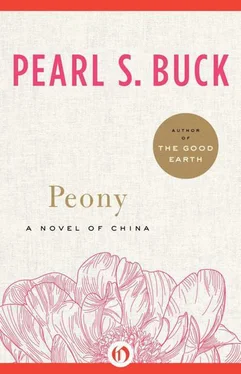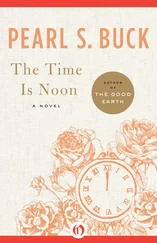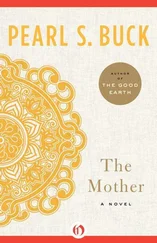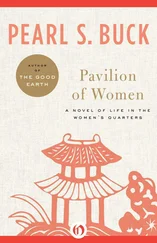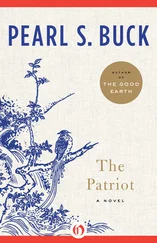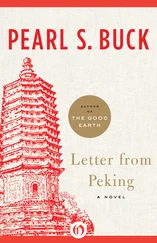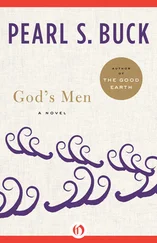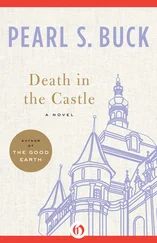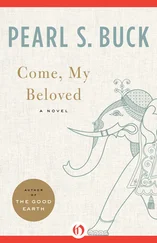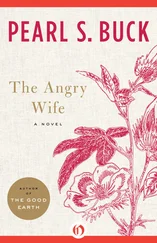Pearl Buck - Peony
Здесь есть возможность читать онлайн «Pearl Buck - Peony» весь текст электронной книги совершенно бесплатно (целиком полную версию без сокращений). В некоторых случаях можно слушать аудио, скачать через торрент в формате fb2 и присутствует краткое содержание. Год выпуска: 2012, Издательство: Open Road Media, Жанр: Современная проза, на английском языке. Описание произведения, (предисловие) а так же отзывы посетителей доступны на портале библиотеки ЛибКат.
- Название:Peony
- Автор:
- Издательство:Open Road Media
- Жанр:
- Год:2012
- ISBN:нет данных
- Рейтинг книги:3 / 5. Голосов: 1
-
Избранное:Добавить в избранное
- Отзывы:
-
Ваша оценка:
- 60
- 1
- 2
- 3
- 4
- 5
Peony: краткое содержание, описание и аннотация
Предлагаем к чтению аннотацию, описание, краткое содержание или предисловие (зависит от того, что написал сам автор книги «Peony»). Если вы не нашли необходимую информацию о книге — напишите в комментариях, мы постараемся отыскать её.
Peony — читать онлайн бесплатно полную книгу (весь текст) целиком
Ниже представлен текст книги, разбитый по страницам. Система сохранения места последней прочитанной страницы, позволяет с удобством читать онлайн бесплатно книгу «Peony», без необходимости каждый раз заново искать на чём Вы остановились. Поставьте закладку, и сможете в любой момент перейти на страницу, на которой закончили чтение.
Интервал:
Закладка:
My own visits to Kaifeng began in 1983 with special interest tours I led for the American Jewish Congress. Each of my groups was allowed to meet with three particular individuals, representing the Zhao and Shi clans. We went to South Teaching Scripture Lane, where the synagogue once stood but where now only a hospital exists to mark the spot. We also saw the 1489/1512 and 1679 steles, stored in a warehouse of the Kaifeng Municipal Museum.
Although discussions with the Jewish descendants were fairly formal, and no mention of Israel was allowed, we were able to glimpse for the first time those people whose ancestors and ours once spoke the same language in prayer, and equally longed for a return to their ancestral homeland.
In 1985 I returned to Kaifeng alone, and managed to speak with six heads of Jewish-descended families and some of their family members, representing the Ai, Li, Shi and Zhao clans. Each day in Kaifeng was an adventure in discovery of this remnant community. I gathered informal oral histories, testaments to how much has lingered on for some, and how much has been forgotten by others.
One member of the Ai clan could not recognize a Star of David as relating to Judaism, and knew nothing of the religion or history of the Jews in Kaifeng. He knew only that he was of Jewish descent because his father had told him so, and for some reason he, too, believed it important to pass down this knowledge to his sons. This, I surmised, was more representative of the Chinese Jewish descendants in Kaifeng, than those few brought before groups of tourists to recount their family’s and people’s history in China and religious customs.
Another member of a different Ai family, the oldest, being in his late seventies, had one of the most interesting stories of all. He was chosen in 1952 by his neighborhood committee to go to Beijing to represent the Chinese Jews as one of the national minorities, for a ceremony held by the three-year-old government of the newly created People’s Republic. Ai met and shook hands with Mao Zedong, Zhou Enlai and Deng Xiaoping. This leads one to believe that the Jews were at one point, soon after the establishment of the PRC, close to being declared a national minority.
An elder statesman for the Zhao clan — the clan which figured so prominently throughout Chinese Jewish history and in Pearl S. Buck’s novel — has begun to build his own mini-museum to commemorate the many contributions of his family’s ancestors to the Kaifeng Jewish community. To this end, he has built a model of the old synagogue as his father and grandfather told him it looked, including the two stone lions which are missing on the model of the synagogue found in Israel’s Museum of the Diaspora.
One of the most enterprising of the Chinese Jews, he and one of this daughters had begun to make Chinese-style yarmulkas which they hoped to be able to sell to visiting tourists within the next few years. Zhao, in fact, found himself in a peculiar position with five daughters, since Judaism had been passed down patrilineally in Kaifeng for centuries. As one of the few Chinese Jewish descendants with an extensive knowledge of his people’s history, he has decreed that any children which his daughters have should be registered as “Youtai,” (meaning Jewish, rather than “Han,” for ethnic Chinese) even if their fathers are not of Jewish descent, on all Certificates of Registry next to the space allotted for nationality. The Zhaos still live on South Teaching Scripture Lane, near the hospital where the synagogue once stood.
A senior member of the Shi clan I met exhibited a deep desire to recover his heritage. His childhood memories were still vivid, recalling yarmulkas made in six sections (in honor of the six days it took G-d to create the universe, so his mother had told him), brass Stars of David kept locked in a medicine chest but lost over the years, and Passover rituals … red paint mixed with water, a substitution for the traditional chicken’s blood, was spread over the doorpost of his home with a Chinese writing brush. This festival was combined with the Chinese New Year, while a second, separate custom taking place a month later called for the baking of cakes without yeast.
Shi has been working closely with Wang Yisha to reconstruct the genealogies of the Kaifeng Jews, in particular those of the Shi clan. To this end, Hebrew Union College in Cincinnati agreed to donate two microfiches of the Chinese-Hebrew Memorial Book of the Dead to Kaifeng — one to the Kaifeng Municipal Museum and another directly to Wang Yisha.
I returned to Kaifeng for the last time in 1988, and came away feeling that a renewed sense of purpose had taken root, both in those Chinese Jewish descendants actively pursuing knowledge of their past, and in the Westerners who have been lucky enough to reestablish contact at this crucial time, when the last generation who can even purport to have such memories, still lives.
In June of 1985, two months before my own solo journey to Kaifeng, the Sino-Judaic Institute was created in Palo Alto, California to promote scholarly research and exchange of information on the subject of the Chinese Jews around the world. In support of the creation of a Judaica Wing of the Kaifeng Municipal Museum, it publishes a newsletter to disseminate information, old and new, on the Chinese Jews, as well as accounts of recent visits to Kaifeng.
Reminiscent of the Shanghai Committee for the Rescue of the Chinese Jews established at the turn of the century, it attempts to focus attention on this miniscule remnant of the Jewish diaspora so that their story may be made known, and efforts on behalf of the promotion of friendship and understanding between the Chinese and the Jews may succeed.
As for Chinese interest in the subject, since 1988 the Shanghai Judaic Studies Association and the China Jewish Studies Association in Nanjing have been established. The latter organization is planning an exhibit of Chinese scholarship on Judaic studies, and the former is amassing a Judaica library to be shared with scholars and others interested throughout China, among other projects.
Other indications that the Chinese are officially interested in fostering closer ties with Jews around the world is the fact that for the past four years a pilot Hebrew program has been conducted at Peking University for six undergraduate Chinese students. Other older scholars from various Chinese universities have also been to Israel from time to time. A tour of the exhibit on the Chinese Jews is being planned in China for the near future as well.
Although the Chinese government has long sought to avoid mention of Israel between Jewish visitors and the descendants in Kaifeng, 1990 has seen the establishment of Academic Exchange offices between China and Israel in Beijing and Tel Aviv. Just how long it will be before formal diplomatic relations are established between the two countries is impossible to predict, but the likelihood appears to be greater each year.
Pearl S. Buck’s knowledge of the Chinese Jews can only be explained by a possible association with missionaries who were in Kaifeng while she was growing up in Nanjing at the turn of the century, or in her discovery of Bishop White’s Chinese Jews, published just six years before Peony was written. The details of daily life and customs prevalent among the Chinese Jews which were incorporated in the story of the Ezra family can only be described as uncanny. In writing Peony, Pearl S. Buck did much to foster greater cultural understanding between the Chinese and the Jews. And in republishing Peony at this particular point in Chinese-Jewish relations, one cannot help but imagine what the future holds in store for continued contact between the two oldest civilizations on earth.
WENDY R. ABRAHAM, Ed.D., author of the Afterword for this edition, is a scholar of the history of the Jewish descendants of Kaifeng. Her dissertation at Teachers College, Columbia University was on the Chinese Jews of Kaifeng, 1605–1985.
Читать дальшеИнтервал:
Закладка:
Похожие книги на «Peony»
Представляем Вашему вниманию похожие книги на «Peony» списком для выбора. Мы отобрали схожую по названию и смыслу литературу в надежде предоставить читателям больше вариантов отыскать новые, интересные, ещё непрочитанные произведения.
Обсуждение, отзывы о книге «Peony» и просто собственные мнения читателей. Оставьте ваши комментарии, напишите, что Вы думаете о произведении, его смысле или главных героях. Укажите что конкретно понравилось, а что нет, и почему Вы так считаете.
